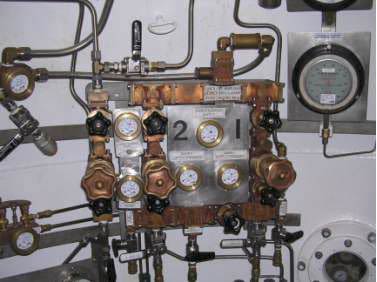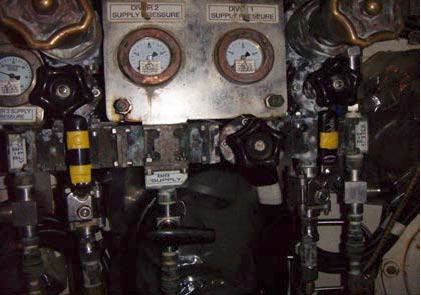Near-miss: Diver loss of gas
A member has reported a near miss incident in which a diver very nearly lost his gas supply. The incident occurred when a vessel was engaged in flushing operations, and was assisting with barrier testing flushing/flooding and positive isolation. The bellman reported that the diving bell was snatching heavily and the decision was made to abort the dive. Both divers returned to under the bell. Diver 1 was recovered into the bell while diver 2 waited on the seabed. Diver 1 entered the bell just as the vessel heaved; both diver 1 and the bellman were unbalanced.
At this point diver 2 reported to the dive supervisor that his ‘gas had gone tight’ and opened his bailout supply. The dive supervisor immediately informed the bellman who saw that the gas supply valve was half closed. The bellman opened the gas supply valve fully and main gas supply was restored to diver 2. Diver 2 secured his bailout supply, then left the seabed and was safely recovered into the bell. There were no injuries or ill effects.

After the divers returned to the chambers the bell was vented to surface to allow for checks and any modifications to be carried out on the valve in question, to prevent recurrence.
The valve control handle was reconfigured and turned 180 degrees from its original closed position, which will ensure that when the valve is in the open position, that it cannot be accidently knocked to closed.

An investigation revealed the following:
- The main cause of the incident was that when the bellman lost his footing as the bell heaved during marginal weather conditions, he fell against the diver’s gas supply valve and knocked it toward the closed position. The design and positioning of this valve arrangement, in the context of the confined space within the bell, was a potential hazard that had been overlooked.
The following corrective actions were taken:
- Diving operations were suspended until corrective actions taken, and the black box hard disk recording was copied;
- The bell was surfaced for investigation and repositioning of the valve/valve handle to prevent a recurrence;
- The dive team were fully briefed on the incident and actions taken to prevent recurrence.
The following lessons were learnt:
- Diving bells are confined spaces packed with complex equipment. The ergonomics of bell diving operations brings the risk of equipment being inadvertently moved or operated. Changing the way key components function can reduce the risk of inadvertent operation;
- The actions of the supervisor, bellman and diver were correctly and quickly undertaken as soon as the gas went ‘tight’, showing the benefit of undertaking regular diving emergency drills.
Safety Event
Published: 23 December 2011
Download: IMCA SF 14/11
IMCA Safety Flashes
Submit a Report
IMCA Safety Flashes summarise key safety matters and incidents, allowing lessons to be more easily learnt for the benefit of all. The effectiveness of the IMCA Safety Flash system depends on Members sharing information and so avoiding repeat incidents. Please consider adding safetyreports@imca-int.com to your internal distribution list for safety alerts or manually submitting information on incidents you consider may be relevant. All information is anonymised or sanitised, as appropriate.
IMCA’s store terms and conditions (https://www.imca-int.com/legal-notices/terms/) apply to all downloads from IMCA’s website, including this document.
IMCA makes every effort to ensure the accuracy and reliability of the data contained in the documents it publishes, but IMCA shall not be liable for any guidance and/or recommendation and/or statement herein contained. The information contained in this document does not fulfil or replace any individual’s or Member's legal, regulatory or other duties or obligations in respect of their operations. Individuals and Members remain solely responsible for the safe, lawful and proper conduct of their operations.
